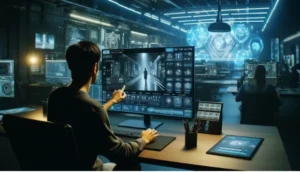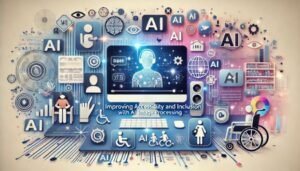How AI is Changing the Process of Creating Digital Video and Photo Content
With digital content changing so fast, AI tools are now common and very useful while creatives and professionals work on different types of media. Thanks to AI tools, photographers, videographers, marketers and social media influencers can do their jobs more quickly, with better results and discover opportunities that weren’t possible earlier.
New technologies, Image to Video AI and Video to Video AI, are revolutionizing how video content is made and edited.
Why We Need Better Content Tools
Because of the explosion of short-form videos, the need for content that is both fast and high quality is growing stronger. Applying traditional editing tools can take a long time, and new users will find them hard to use.
At this point, AI helps out by removing boring jobs, making images more attractive with a few presses and even producing content all on its own. Artificial intelligence allows creators to do more in less time, but without losing their creative ideas.
What does Image to Video AI do?
Image to Video AI lets anyone create moving videos from fixed images. Whether you focus on faces in photos or on the actions in a product shot, the technology helps bring these images to life.
Key Features:
Motion Effects: Pretend your camera motions out, zooms in or makes fun changes to animations.
Face Animation: Change the emotions on a person’s face in a photo to create either talking portraits or other kinds of expressions.
Text-to-Speech Integration: Combine visual animation with AI-generated voices for lifelike avatars.
This tool is especially beneficial for content creators who want to repurpose images into video content without starting from scratch. Brands, educators, and storytellers use Image to Video AI to add depth and narrative to their visual assets.

How Video-to-Video AI Works
Image Video AI is designed to add motion to photos, while Video to Video AI converts current video into a new form. Regardless of whether you choose style transfer, motion retargeting or frame-by-frame enhancement, this tool gives you more ways to design and create.
Use Cases
You can make a video look modern or throw some retro flair at it using visual styles.
- AI Upscaling: Enhance your video quality, lower the noise and make colours stand out with AI.
- You can transform a scene by changing the background, the lighting or items within it. It’s done automatically.
- Many people, whether they edit videos professionally or for fun, find Video to Video AI helpful because it cuts down on repetitive editing and opens up new creative ways to edit their videos.
Benefits for Content Creators and Marketers
Time Efficiency
With AI, creators can finish editing in a fraction of the time it previously took, so that they can meet all their deadlines.
Cost-Effective Production
Professional content is accessible to small teams and individuals because they do not need costly programs or new team members.
Creative Innovation
Through the use of Image to Video AI and Video to Video AI, anyone capable of using AI can explore formats, effects and narrative styles previously reserved for studios.
Enhanced Accessibility
Often, these tools include simple-to-use interfaces so that new users can easily make attractive content.

How AI Is Changing Digital Editing
Now that AI is advancing, ideas are easier to realize than they used to be. Upcoming versions are expected to let users make edits as they watch the content, produce emotional content automatically and handle video, audio and text at the same time.
AI will help creators create stories that are both more engaging and produced more efficiently than before.
Final Thoughts
AI is now not just supporting creators, it’s also actively working with them. Whether it’s working with old family photos, making viral videos or editing advanced visuals, Image to Video AI and Video to Video AI are now expanding what is achievable in digital content.
As they get better and more accessible, everyone can now create inspiring media in a much shorter period.
